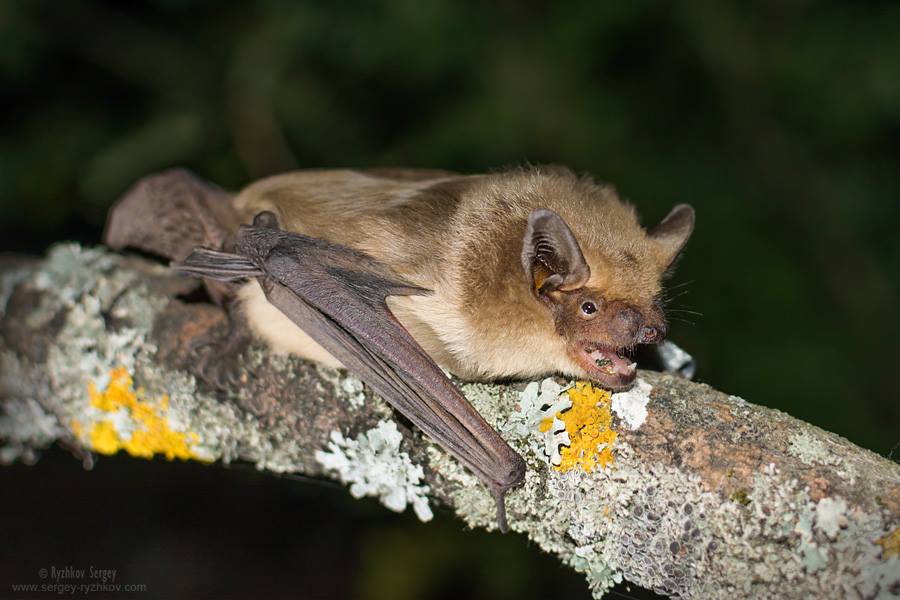Researchers have discovered a bizarre mating strategy in bats with penises so “disproportionately long” that they cannot be used for penetrative 𝑠e𝑥.
The behavior was observed in common serotine bats (Eptesicus serotinus), which is found across Eurasia. One of the largest species in Europe, the bat has a wingspan of around 11-16 inches—according to a study published in the journal Current Biology.
The newly described behavior involves the male bats essentially using their oversized penis as an “extra arm” during the 𝑠e𝑥ual act before mating without penetrating the vagina. Study author Nicolas Fasel with the University of Lausanne in Switzerland told Newsweek the study represents the first time that non-penetrative 𝑠e𝑥 has been documented in mammals.
When erect, the penises of male serotine bats are around seven times longer than the vaginas of the females. The penises also have an unusual “heart-shaped” head that is roughly seven times wider than the vaginal opening.
Both the length and shape of the penis would make penetration post-erection impossible, raising the question of how the bats mate.

“By chance, we had observed that these bats have disproportionately long penises, and we were always wondering ‘how does that work?'” Fasel said in a news release. “We thought maybe it’s like in the dog where the penis engorges after penetration so that they are locked together, or alternatively maybe they just couldn’t put it inside, but that type of copulation hasn’t been reported in mammals until now.”
Very little is known about how bats have 𝑠e𝑥—most previous research has only been able to observe the backs of mating pairs. But in the latest study, the researchers managed to observe the bats’ genitals during copulation by examining footage shot by cameras placed behind a grid that the bats could climb on.
In collaboration with a bat rehabilitation center in Ukraine and a citizen scientist in the Netherlands, Fasel and colleagues managed to record the unusual mating behavior.

“We could describe a novel copulatory behavior in mammals. Until now, it was believed that all mammal species use penetration during copulation. Thanks to a great collaboration with a passionate bat researcher in the Netherlands and the staff from the Ukrainian Bat Rehab center, we could obtain amazing videos,” Fasel told Newsweek.

“These recordings revealed that the bats do not engage in penetrative 𝑠e𝑥, and we noted that the erectile tissues of the penis were enlarged before they made contact with the vulva.”
During mating, the male bats grasped their partners by the nape and moved their pelvises—and fully erect penises—in a probing fashion until they made contact with the female’s vulva, at which point they remained still and held the females in a long embrace.
Rather than functioning as a penetrative organ, the male bats used their oversized penises like an extra arm to push the females’ protective tail membrane out of the way so they could engage in what scientists call “contact mating.” In some ways, this resembles the way birds have 𝑠e𝑥 by touching together their cloacae, an orifice that they use for excretion and the exchange of 𝑠e𝑥ual fluids.
On average, the researchers found that serotine bat mating events lasted around 53 minutes, but the longest lasted for more than 12 hours.
“Following copulation, we observed that the female bats’ abdomens appeared wet, suggesting the presence of semen, but further research is needed to confirm that sperm was transferred during these putative mating events,” Fasel said.
The researchers said it is possible that the male bats may have evolved their oversized penises to push aside the tail membranes of the females, which might be used to avoid 𝑠e𝑥 in certain circumstances.
“Sexual selection has driven the evolution of incredible traits,” Fasel said. “Selective pressures have been known to play a role at the level of male-male competition or female choice.”
While the contact mating behavior has never been seen before in mammals, Fasel said there are a few species in southern Africa and Europe with large erect penis sizes that may also engage in non-penetrative 𝑠e𝑥, although this has yet to be confirmed.
Jeff Clerc, a research biologist with the U.S. National Renewable Energy Laboratory, who was not involved in the study, told Newsweek the paper was “really interesting.”
“As far as I have encountered, this behavior is quite unusual, but also highlights how little we know about some of the most basal behaviors of bats,” he said.




